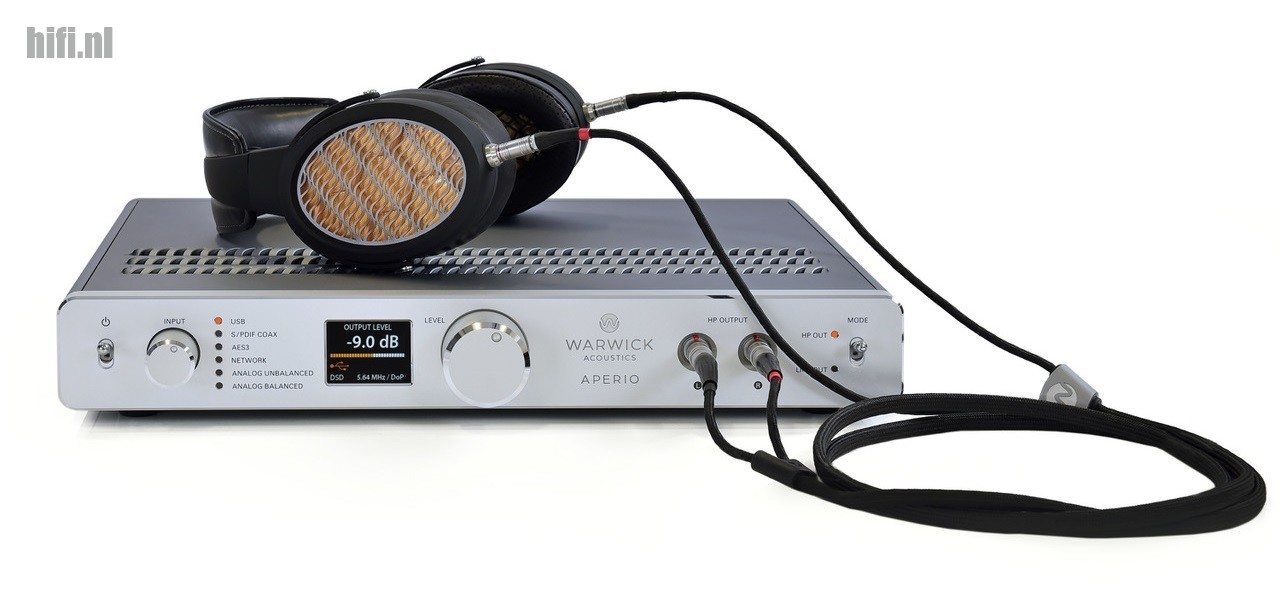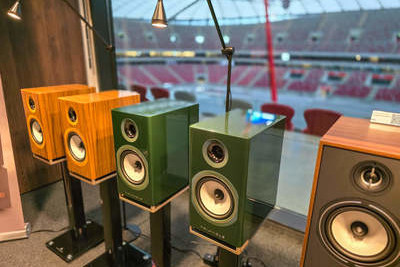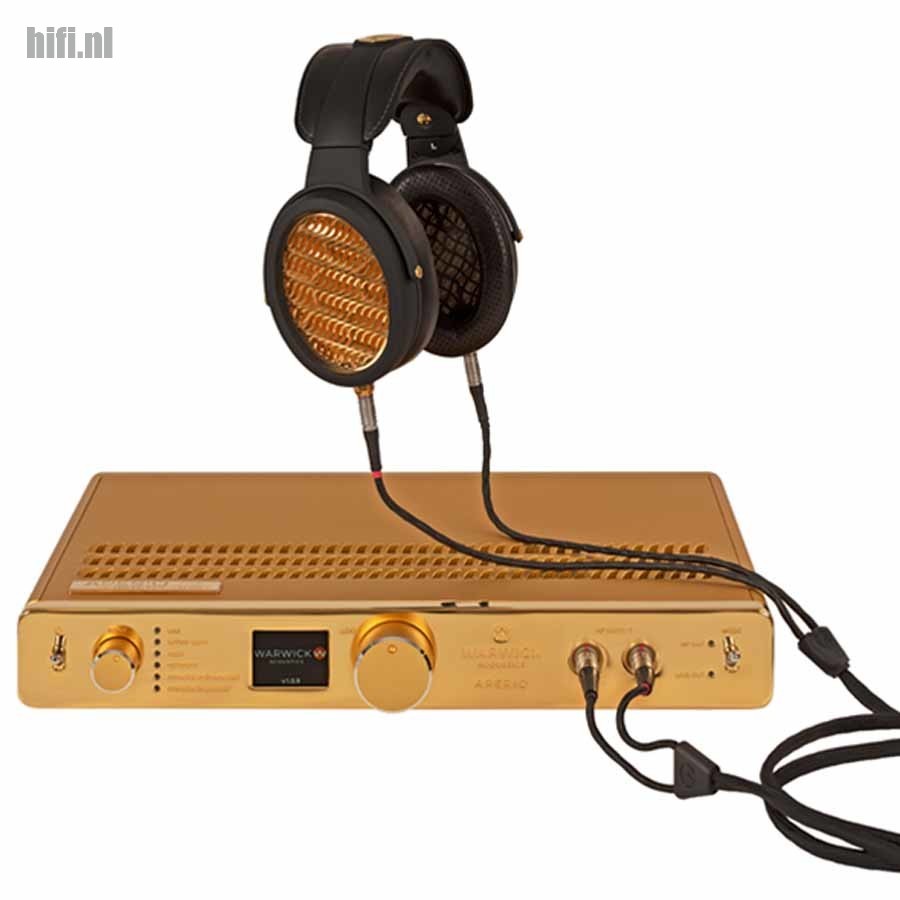
Electrostatic headphones have their own band of devotees, none of which seem to mind paying a little more for a high-end product. But there doesn't seem to be much technological innovation going on, especially when you compare it to the regularity with which new planar magnetic headphones are launched. Warwick Acoustics however, known for its Sonoma Model One, is aiming to take the electrostatic driver to a new level. (Dutch: click here)
It is rather peculiar to realize that the most expensive piece of hi-fi equipment that ever arrived in the test room was not a set of premium speakers or a 1 kilowatt high-end amplifier, but a set of headphones. Yes, that's correct: a set of cans. Price tag: 25,000 euros. Granted, they are a pair of headphones that, due to their use of electrostatic technology, is equiped with its own DAC / amplifier and custom cables, including a USB cable and network cable that are optimized for this system. The price tag applies to the entire package. Nevertheless, it remains a hefty sum. Traditional hi-fi enthusiasts who see head-fi as merely an accessory to serious music consumption: forget it.
Does the aforementioned price tag make Warwick Acoustics' Aperio the most expensive headphones we've ever listened to? Believe it or not, the answer is “no”. After all, there is also the Sennheiser Orpheus 2 HE-1, which taps at 60,000 euros or approximately 2.4 Aperios (or, and provocatively: 150 Sennheiser HD660s). However, the Germans have not built many units of those expensive headphones and, moreover, the accompanying amplifier is housed in heavy Italian marble (in the ultimate hi-fi or summit-fi category such extravagance is commonplace). This usually requires reviewers to go to Sennheiser's offices and test the HE-1 on site. Warwick Acoustics, however, dared to send us the Aperio – which turned out to be quite an undertaking.
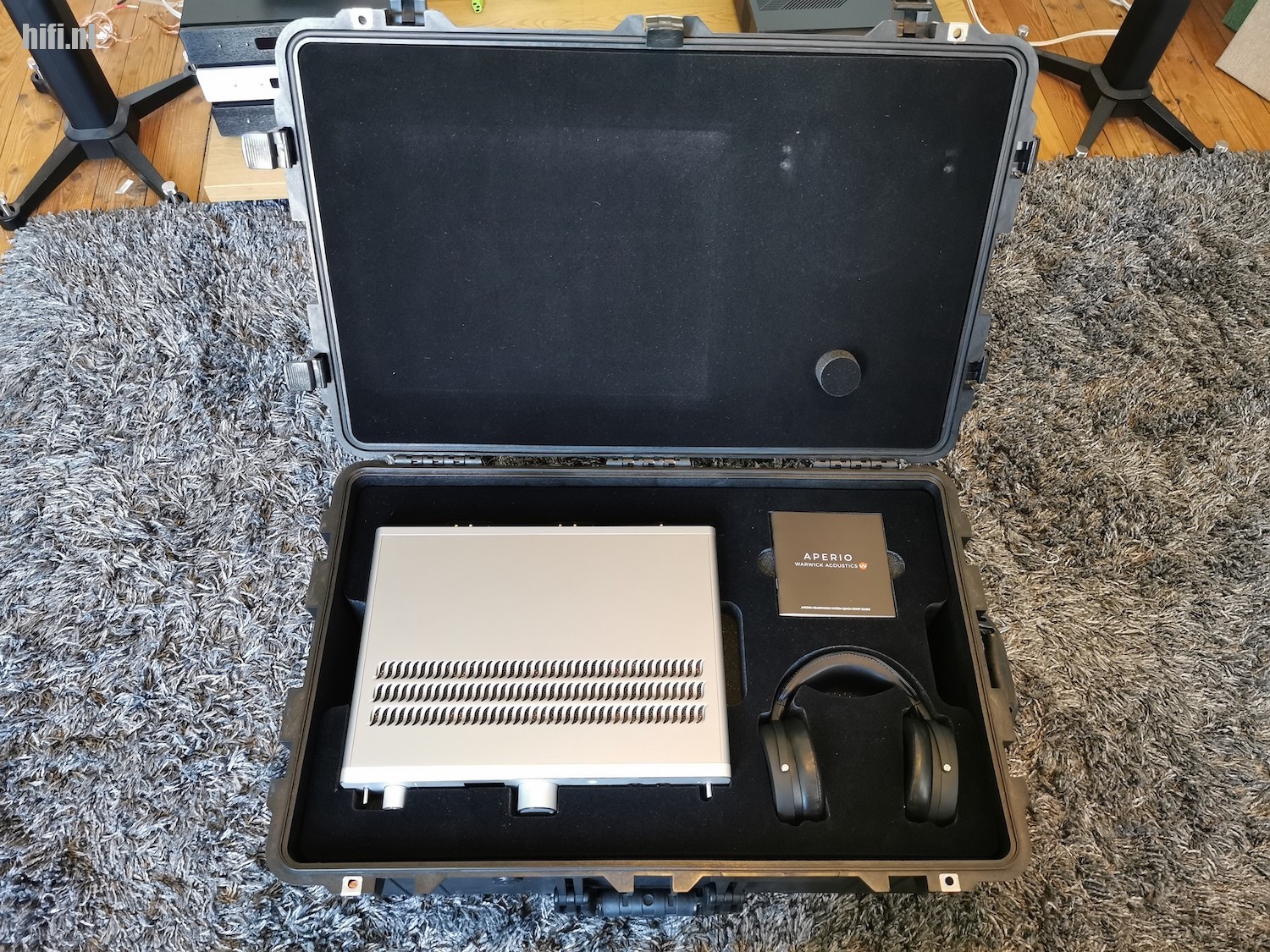
The headphones and its amplifier arrive in their own robust flight case from Pelican Products, which looks like it can easily survive a world tour with Iron Maiden. The case alone is probably worth quite alot. The total package weighs so much that the flight case had to be equipped with wheels and handles. That's the last time we'll ever say "No, no, we'll carry it up to our test room on the first floor on our own, don't worry."
Electrostatic DNA
Warwick Acoustics is hardly a household name. But is that unusual? Not really. The head-fi world has its own stars, and they are not necessarily the familier names from hi-fi. And, as it goes for every hobby, you will find exclusive brands at the absolute top which are unknown to the general public. It's the same for speaker-centric hi-fi as it is for mountain biking, or quite probably, competitive fishing.
To put Warwick in a bit more context, we'll start of telling you the company used to go under the name Sonoma. We've previously tested the 5,000 euro Sonoma Model One, another all-in-one system with headphones in which electrostatic drivers play the part of the leading man. However, the company changed its name to Warwick Acoustics when it decided to also offer its technology to the lucrative automotive sector. The name also more clearly refers to the birthplace of the High Precision Electrostatic Laminate (HPEL) driver that powered Sonoma One, which is the University of Warwick, England.
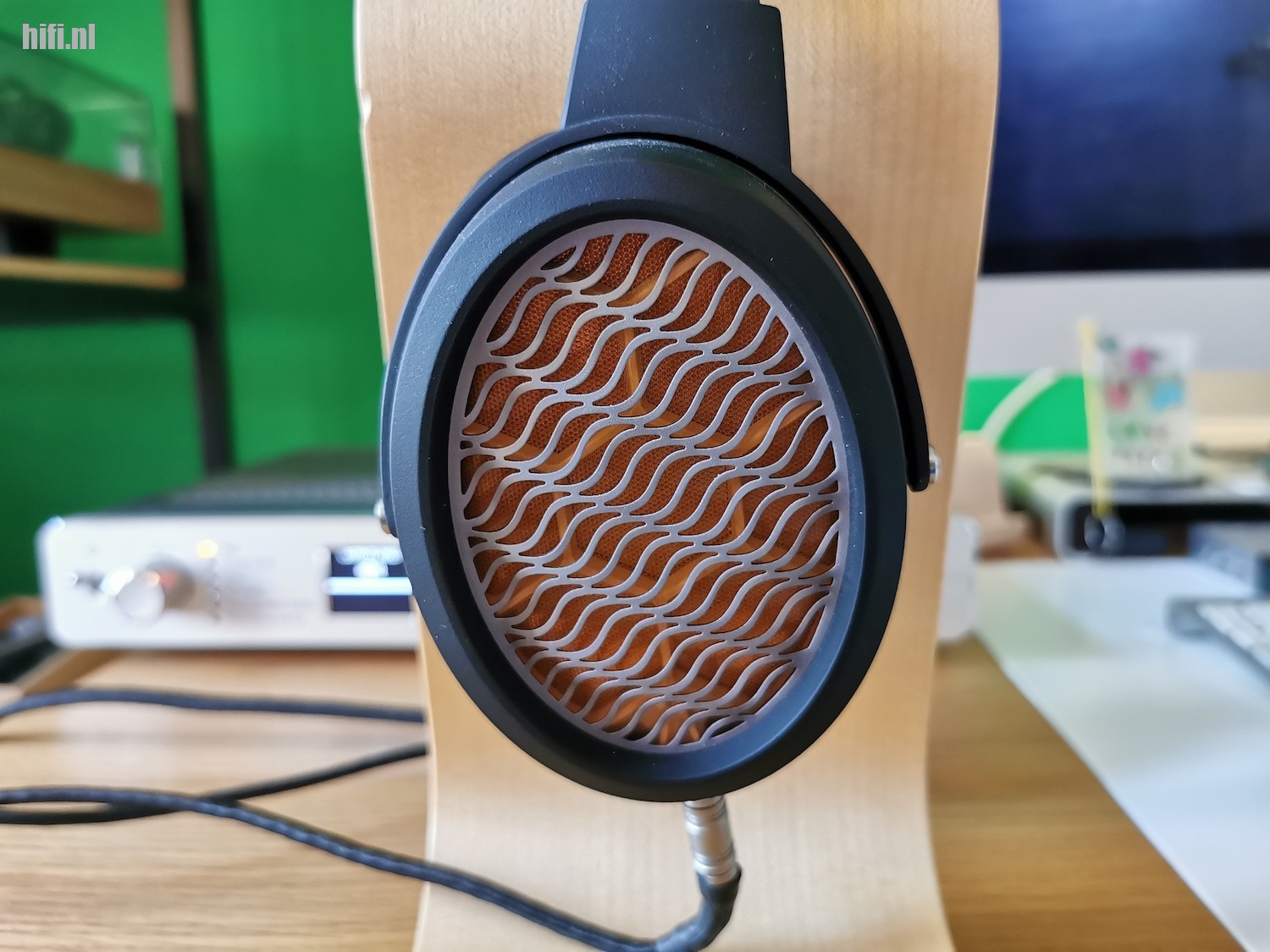
As the name would indicate, this is an electrostatic driver. In a classic driver of this type, a membrane between two metal plates is set in motion by static electricity. This is a completely different way of working than the dynamic drivers that are present in most headphones and almost all speakers, and not quite the same as the magnetic planar drivers that can be found in more expensive headphones from brands such as Audeze and HiFiMan. A striking feature of electrostatic drivers is that they are driven by very high voltages, sometimes more than 1,000 volts. The fact that you need a very separate amplifier plus the generally more difficult production of electrostatic drivers means that these types of headphones are usuallly quite expensive, or indeed rather very expensive. Why do some music lovers choose it anyway? Electrostatic drivers have a small mass and therefore move quickly. Moreover, they hardly suffer from distortion.
The next step
The Warwick HPEL is a further development of the classic electrostatic driver, the most striking feature of which is that a wafer-thin membrane of 0.7 mm has a metal mesh on only one side. That made the driver in the Sonoma One even lighter and more responsive. The Aperio takes that lightweight driver and makes it symmetrical again, with a metal mesh on both sides. The end result is the BD-HPEL driver with a longer stroke, less distortion and greater linear behaviour, according to Warwick's designers.
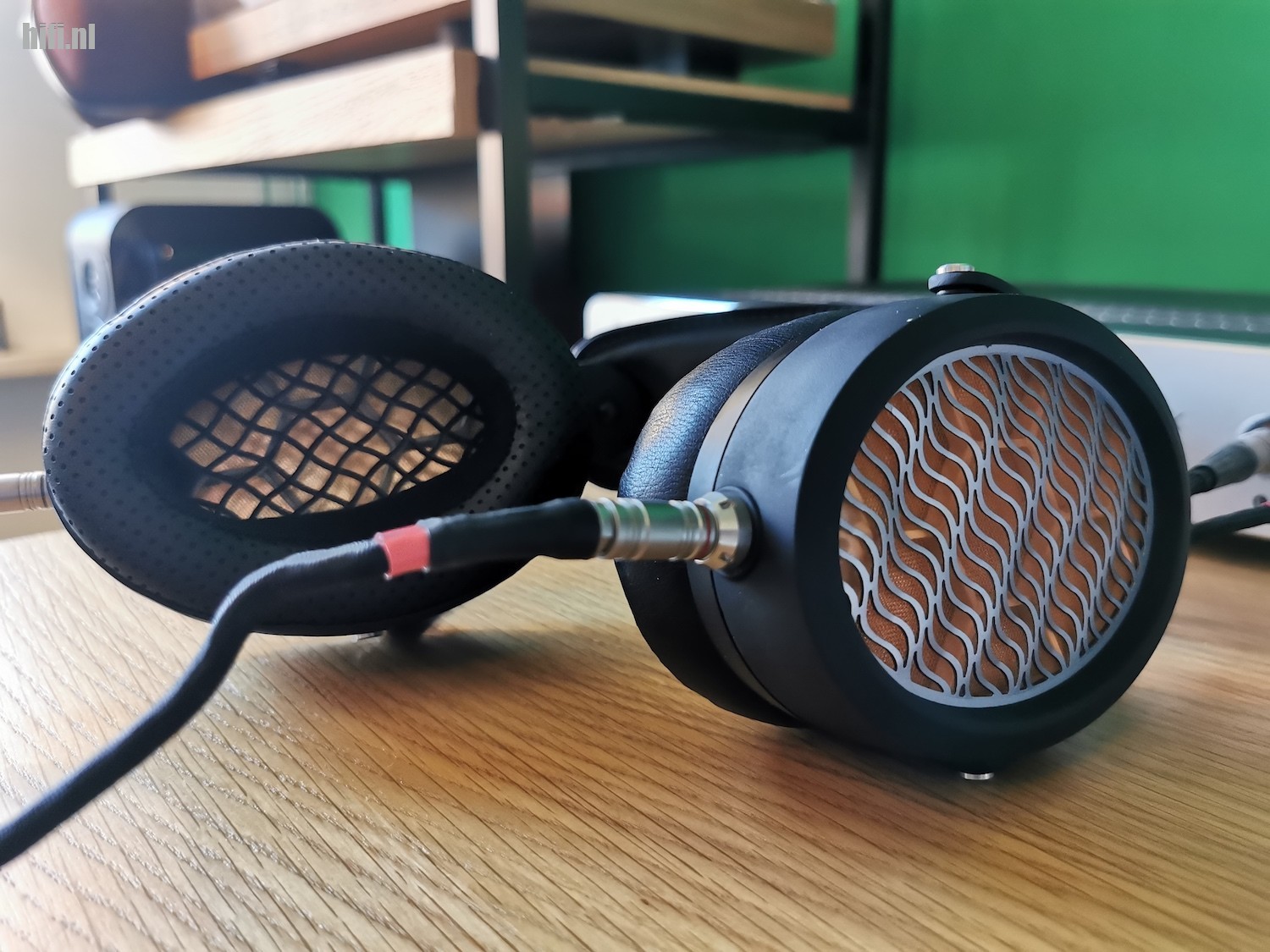
The drivers are in turn mounted in a frame made of magnesium, a material chosen for its low weight but also because it is very rigid. The construction is really rather different from your average headphones, because the driver seems to be suspended in the hole. You can look straight at it both on the inside and the outside, with only a fine metal grille on the outside for protection.
The total weight of the headphones is just over 400 grams, which is not extremely light. At least on paper, in practice we didn't find the Aperio headphones particularly heavy or awkward to wear on the head for a long time. Comfort is also great, although we have to say that proper placement on your head is crucial. If the ear pads are not perfectly in place, you will immediately notice a somewhat extinguished bass.
Preamp and more
When it comes to functionality, there are only a few shortcomings to be found. The abundance of inputs and the ability to switch between headphone and preamp mode allow you to fit the Aperio Amplifier into almost any system. Is headphone listening really your thing and something you do behind your computer or connected to a network transport? Then you opt for one of the digital inputs. Do you prefer your own network player with transport or CD player? Use the analog inputs, and choose between balanced and unbalanced options. Do you want to go for the all-in-one solution? The piece of equipment also includes a network module and supports quite a few streaming options. Very versatile, although we regret that the Aperio in network mode is not Roon Ready. It is of course no problem to use Roon via a USB connection to a computer.
The digital to analog conversion section is based on a dual DAC implementation of two ESS9038 chips, providing support for hi-res PCM up to 384 kHz and DSD. In terms of quality of design, construction and product finishing, you don't need to fret. Everything down to the very last detail appears to be of high quality, including the cables that run between the amplifier and the headphones. That is even more crucial here than in most cases, because it is an electrostatic system that has very high voltage flows across that cable.
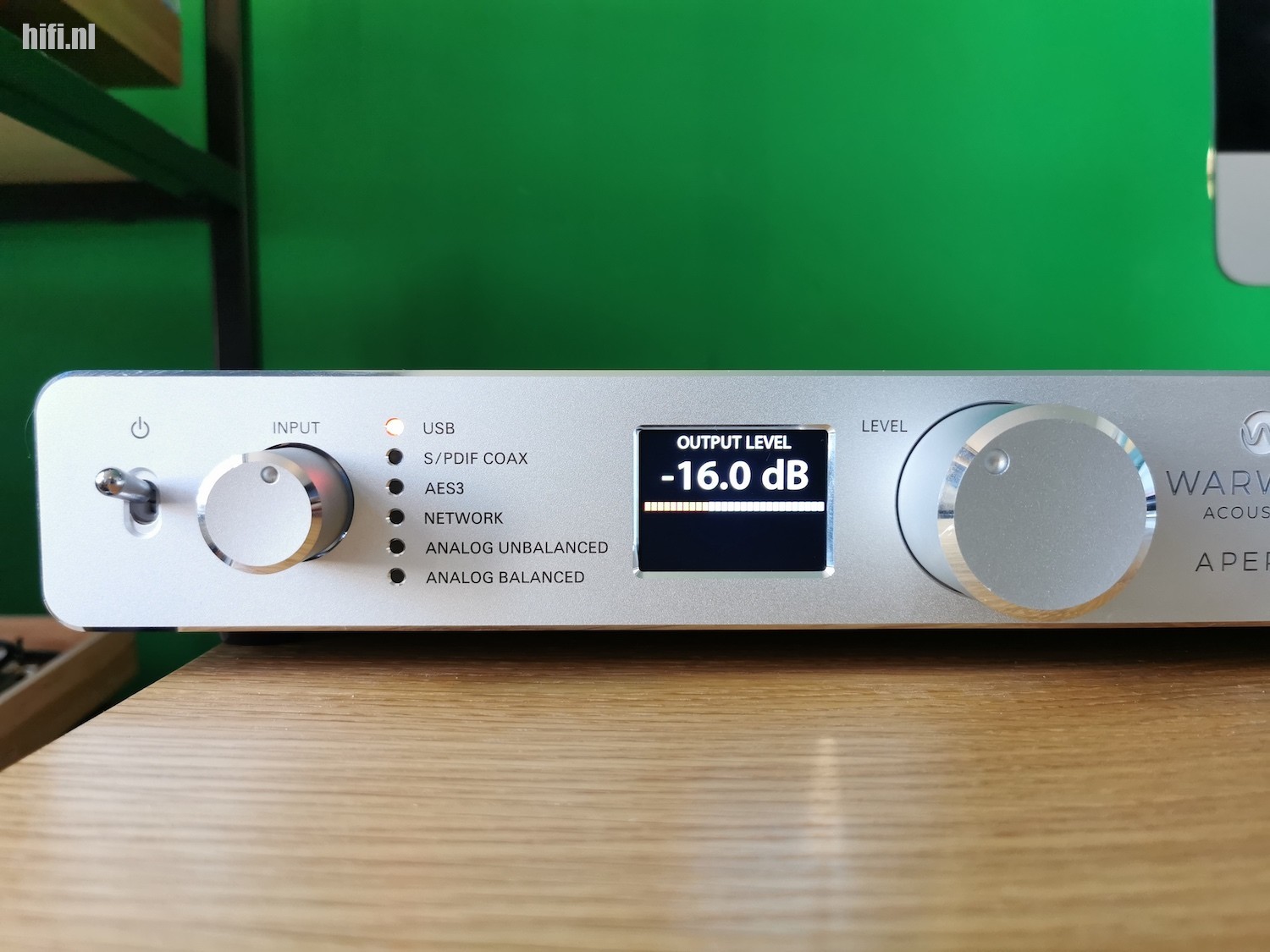
The buttons also offer some nice tactile feedback upon touching or turning them. The on-off button or HP / line-out selector jumps with a solid 'tjak', while the rotary knobs allowing you to select an input or change the volume offer some resistance before making a clear and satisfactory click. It all feels very high-quality, although we would have preferred a stepless knob for the volume control. That might well be the only criticism you can offer on how the Aperio functions, but we found fine-tuning the volume a bit difficult, especially late at night when you want to work with different levels of volume. Turning the knob from the mute position, you go to -60 dB with one click, and to -26 dB with the very next one. (Note: a recent firmware update has changed this so there are more volume steps allowing finetuning at low volume levels). That is not too loud, but given some of our source material we did not have to go too far in order to approach the pain threshold either.

With (very) open headphones, it is generally speaking always wise to be careful with the volume, because it's quite easy to listen at high levels undetected. That danger is even more prevalent with the Aperio, as it is just so rewarding to turn up the volume. For example, when we listened to the wonderful 'The Edge of the Sea', composed by Craig Armstrong and Calum Martin, and performed by the Scottish Ensemble, we really wanted to dive into the voice of Cecilia Weston on 'Ballantyne: Movement 6'. Without realizing, we kept turning the volume knob, bit by bit. It's not a problem in terms of playback quality though, because it remains flawless even at unhealthily high volume levels. Weston sings beautifully here in Gaellic, and the word 'magisterial' is really appropriate when she touches those very high notes. They are crystal clear on the Aperio system – which is, again, a bit tricky as the higher levels were definitely too loud. (Again, the recent firmware update should alleviate this problem)
Not a single trace of distortion
The Edge of the Sea is also a good example of music that seems to be made to be heard on the Aperio. This suite of compositions was inspired by psalm songs in Gaellic, as sung in the northern islands above Scotland itself. The vocal style is very special, not comparable to Celtic folk music as you might know from the Irish pub down the street. When we initially heard it, rather quickly, we first presumed we were listening to music stemming from the Orthodox singing tradition from somewhere in the Balkan region.

The impression we get when listening time and time again is that the synergy of the Aperio parts is excellent. With the Aperio it is all about a purity and agility that others can hardly match, which makes certain instruments sound extremely realistic. Ibrahim Malouf's trumpet on 'True Sorry' – a test track we often reach for – is represented without the slightest trace of distortion. It's truly impeccable. The freshness and pace also allows the Aperio to handle the great dynamic burst of the entire orchestra around minute 2:40 quite effortlessly.
A casual question from a colleague (“Remind me again who that singer is that can match a trumpet with his voice?”) brought us back to Dhafer Youssef, a Tunisian musical jack-of-all-trades who combines all kinds of traditional music styles with jazz and a voice with an astonishing high reach. Truly incredible, but his skills on the ud, a challenging ancient string instrument of North African origin, are also sublime. 'Birds Requim' is one of his most interesting works, as Youssef on this album conspires with a gang of Swedish jazz musicians. The result initially resembles typical supercooled Nordic jazz, but it is precisely because of that voice and the ud that it evolves towards something of an intriguing fusion between the new and the very old. We often find the sound of an ud a bit on the tinny side on many headphones and tend to miss out on the finer details when played really fast, but no so with the Aperio. Attack, string reverberation, the connotations of the wooden instrument itself, it's all there.

As you would expect from very open headphones, you also get a nice big stage. Your music is not playing in your head, but is represented far outside your headspace. Still, we are a bit surprised that it is not an immense soundstage, such as for instance the HD800S from Sennheiser provides. The Sonoma One seemed just a bit bigger in that regard as well. Is the difference in character good or bad? The downside is that the Aperio does give the bass a relatively large amount of body, without ever becoming a bassheads only device. Neither is the tuning for exclusively suited to refined audiophile recordings, only to be consumed to with your pinky delicately lifted. It makes these headphones just a bit more universal than some flagships, as well as different from your average electrostats. You get to enjoy something like Tricky's new 'Falling to Pieces' without feeling like you're getting a bland representation.
Conclusion

We will not dwell too much on price tags here. If you must choose between a newly equipped kitchen or this headphone system, you ofcourse really should make the rational choice. But the target audience of a product like this are people who don't need to make choices like that and can afford an ultimate music experience. Does the Aperio offer that? In our opinion, the answer is “yes”, with the consideration that someone looking for a system at this level should always take the time to investigate all the alternatives. One thing to note is that there is hardly a ready-made headphone system out there that you can compare to the Aperio. By mixing and matching you can put together something that is also summit-fi. But whether it will provide the same purity and neutrality is another question. Whether that will fascinate you is of course a matter of taste.
The strength of the Warwick Acoustics system is that one fell swoop (of the credit card) assures you of an absolute top performance, ranging from the DA conversion and amplification to a musical reproduction characterized by acumen and agility. And the flight case? That's rather nice too.
Warwick Acoustics Aperio
€ 25,000 | quad-raad.nl
Rating 4.5 out of 5
